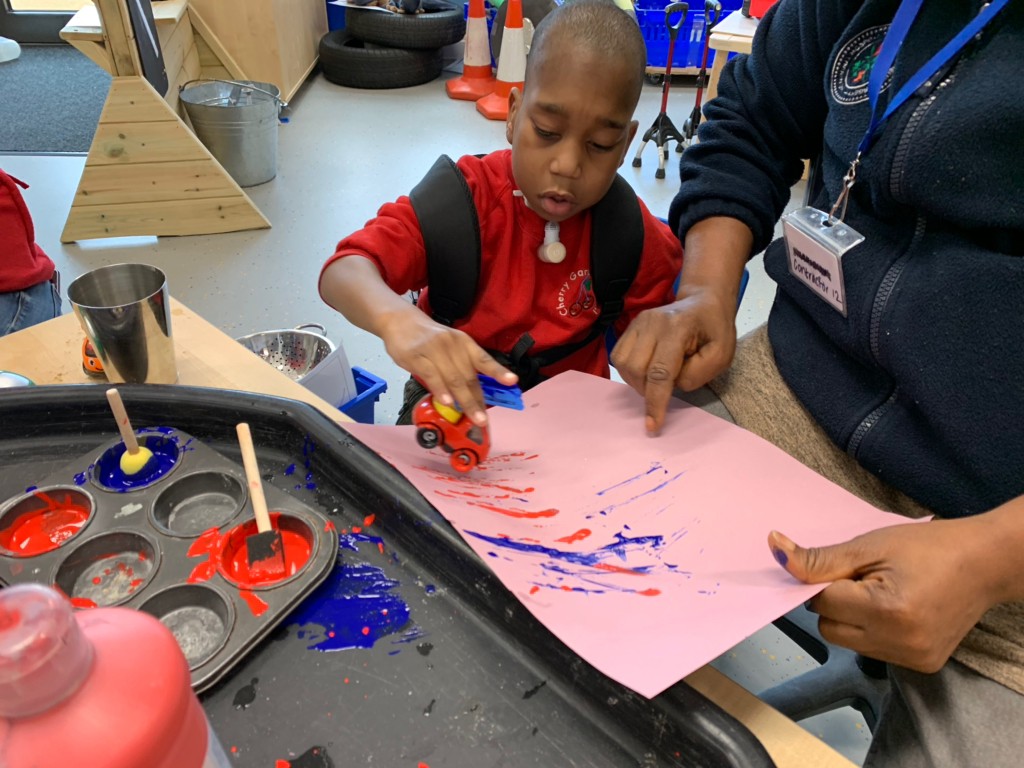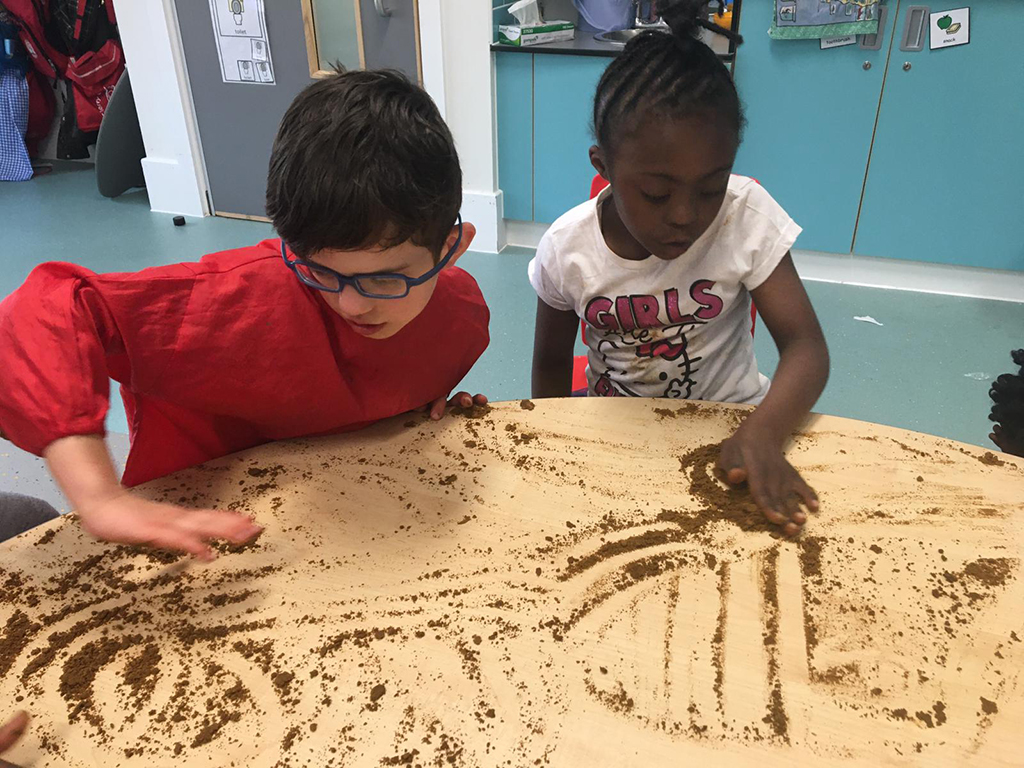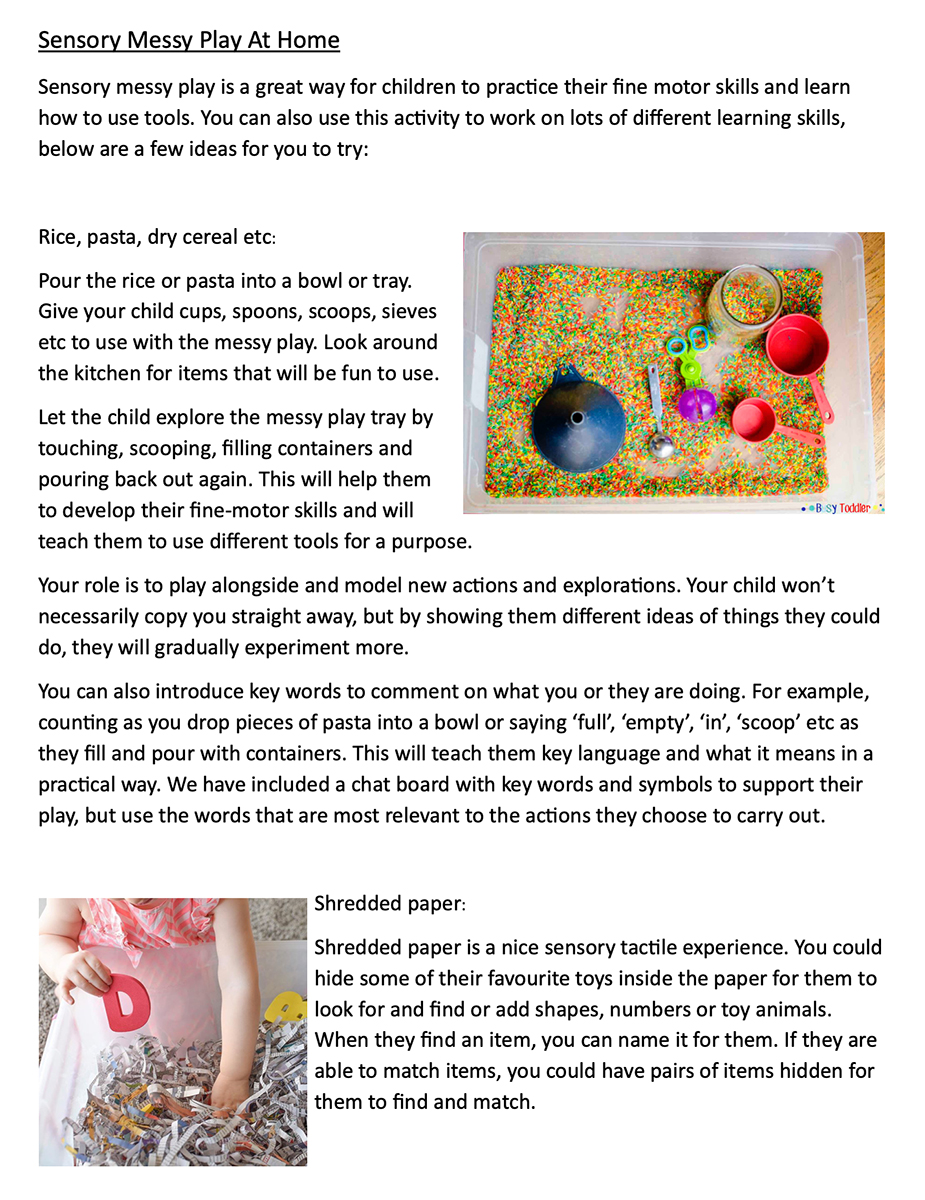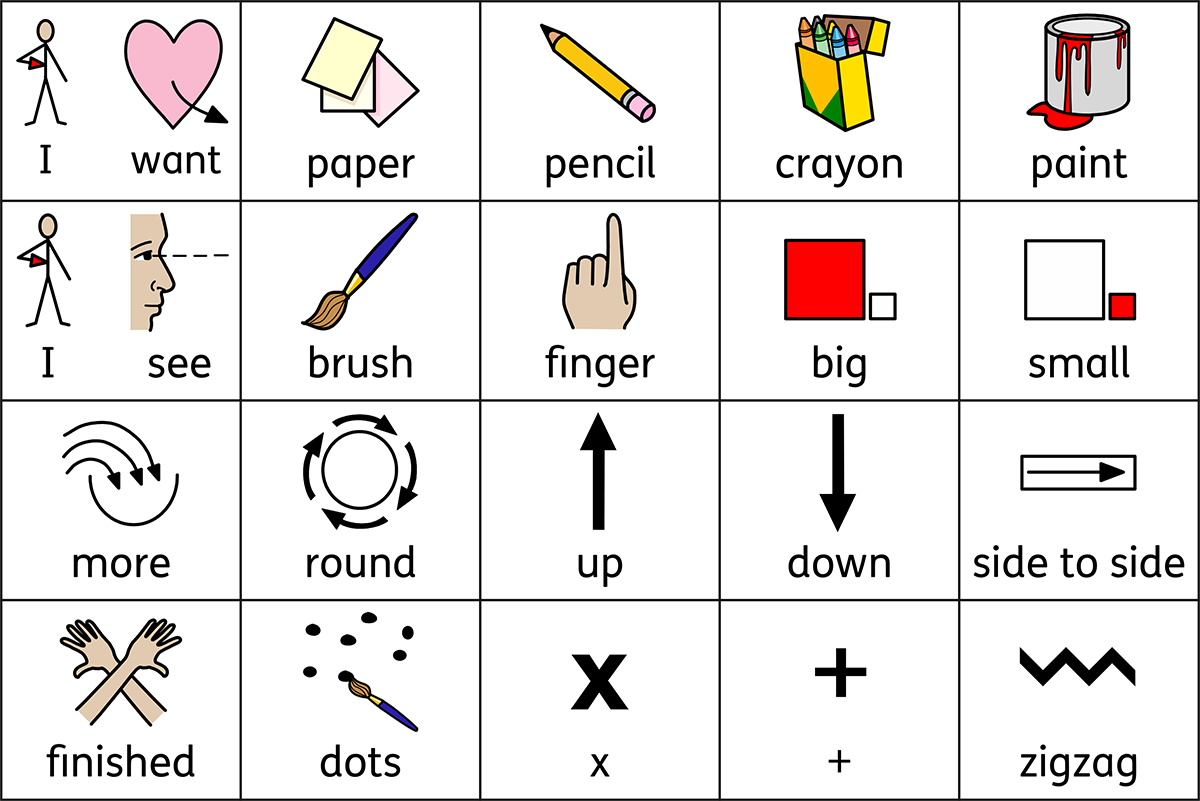Mark-making is a term used to describe pre-writing activities which encourage children to take notice of the marks they are making and start to experiment with a range of different marks and materials. These activities could be done using pens and crayons on paper, using art materials such as paints and pastels or even screen-based, for example using iPad apps. It is always easiest to start with large-scale mark-making before trying to work on small shapes, as smaller movements require more fine motor skill and control.
The series of progression for the types of marks made could look like this:
- Random marks, but the child is noticing the effects of their movements and actions
- Experimenting with directional marks (horizontal and vertical lines, circles)
- Writing patterns (zig-zag, wavy lines, dots etc)
- Pre-letter shapes (horizontal, vertical and diagonal straight lines, x,+, triangle and square shapes)
- Tracing letters
- Copying letters
- Writing letters
If your child is still not able to make all of the pre-letter shapes confidently, it is useful to try lots of fun activities to practice these basic shapes rather than focusing on letters and numbers.
For many of our students, their difficulty with fine motor skills will prevent them from being confident in writing letters and they may find it easier to use typing as their main form of writing. Practising letter matching games can help to develop the skills needed for typing later on.
Here Anna describes some of the fun and sensory ways in which we encourage mark-making in school using music and movement:
Here are some ideas for other mark-making activities that can be done at home:
Mark-making with paint and toy car wheels. Roll the cars through the paint and then make a range of lines and marks with the wheels as you drive them across the paper! You can also try stamping toy people and animal feet to see the shapes they make.

Scatter lovely smelling spices on the table or in a tray and have fun making shapes and lines in them with fingers or brushes.

Fine Motor Skills
As well as providing lots of opportunities for exploring mark-making, fine motor activities are an important part of developing independence and accuracy in a range of everyday tasks. Fine motor activities will help to strengthen and refine finger movements and allow your child to be more accurate with holding writing tools and making different marks.
Disco dough is a fun way of practicing fine motor skills; here Blanca shows you how to complete this activity at home:
Here are some ideas for other fine motor activities that are easy to do using things around the home:
Cooking is lots of fun and is a great way to practice fine motor skills. Use child-safe knives, a grater and a peeler to make a range of different dishes. Your child will develop their grip, strength and accuracy.


Threading is a good way of practising control and developing a pincer grip. Dried pasta shapes are an interesting way of practising threading, either on to spaghetti sticks or a ribbon or string.

Cutting and sticking are simple fine motor activities for children who are more confident with tools. For earlier stages, you can use a pincer grip to tear strips of the paper to stick on to a collage, like these lovely jungle leaf pictures!

Here are some useful resources:




